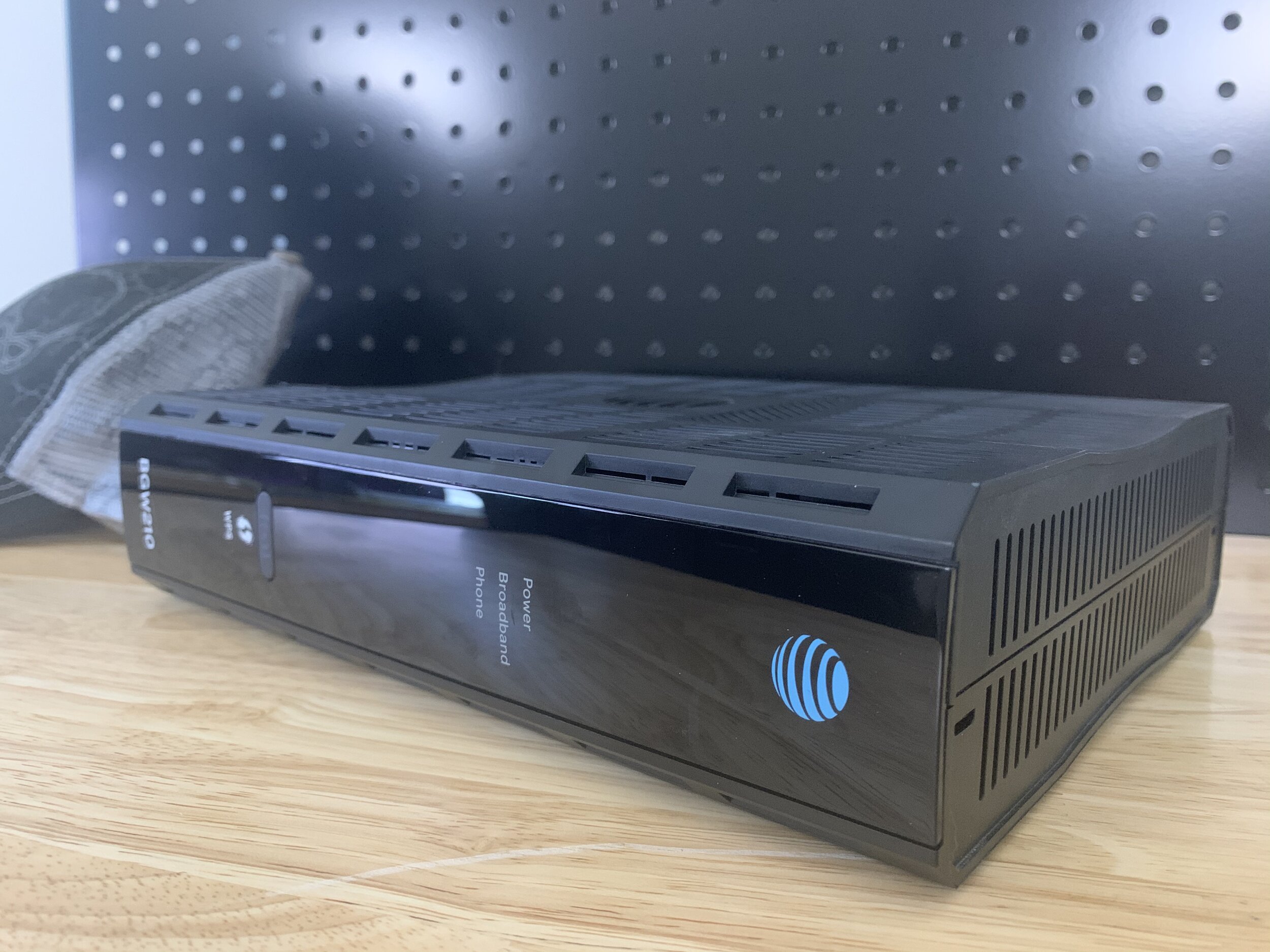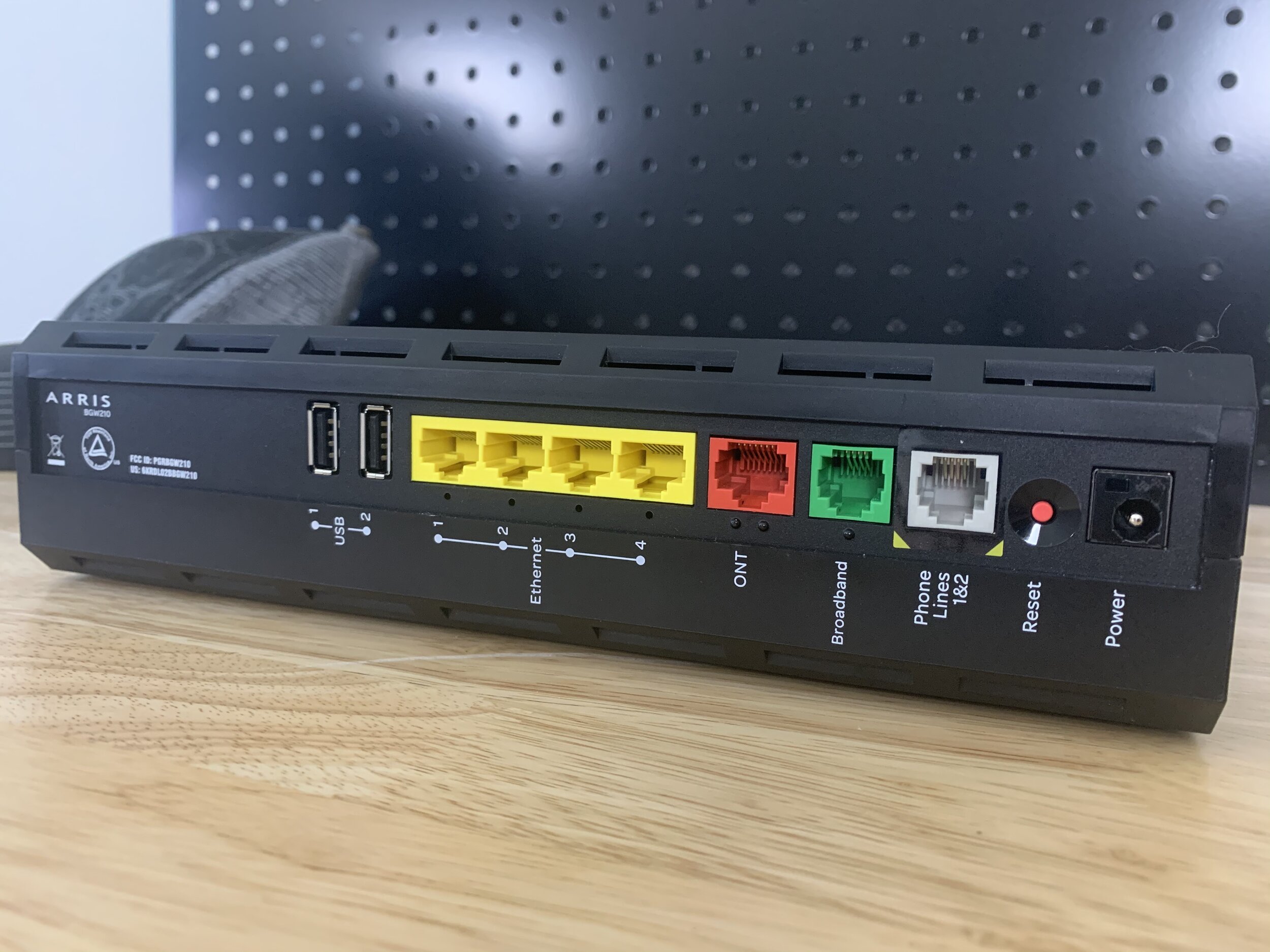AT&T Fiber and Ubiquiti UniFi
/This is going to cover a wide range of information and even a little bit of my personal experience with AT&T and how it compares with Google Fiber. This one is going to be long, so I guess let’s go ahead and get started. You may be interested in reading about Google Fiber before reading this as there is some overlap between the two.
Why did I switch to AT&T?
First off, I moved and was forced to make the switch. Google Fiber isn’t available every where in Huntsville, AL but from what I can tell, they are very very slowly expanding into some areas. In my new area, of course, they do not have any lines. Furthermore, AT&T was my only choice, thankfully though, they at the very least have the Fiber options. Also, I didn’t opt for full Gigabit because I’m cheap and after paying Google $70 a month for internet and then AT&T asking for $80 plus $10 rental fees made me nope the F out. I went for 300Mbp/s down and 150 Mbp/s up for $60 (including $10 fee). I also hesitated during sign up and the included Visa gift card went from $100 to $200, which is nice I guess.
The Goods
Before we get bogged down in the finer details let’s first take a glance at what hardware I got with my service and information about prices and speeds.
The ONT
As far as I can tell, AT&T’s ONT doesn’t have a common alternative name like Google Fibers ONT, which is commonly referred to as Fiber Jack by the techs and customers. My AT&T installation tech, consistently referred to it as the ONT and only once as a terminal. ONT by the way, stands for Optical Network Terminal.
What does the ONT do?
It simply converts “light” signals from an optical cable to an electric one for copper.
That’s it, Google Fibers ONT (Fiber Jack) also acts as a WiFi Access Point.
My tech claimed to use CAT6 ethernet cables during the install.
How is it powered?
This may seem like an odd question but I put this here because of Google, their ONT can be powered via USB or any 802.3af complaint Power Over Ethernet (PoE) device. The AT&T is powered by a traditional 120V outlet.
The Gateway
This is probably the most controversial device in existence. Without it, you will not have access to any of the AT&T services. Also, AT&T makes you pay an additional $10 a month to rent the thing, even though it’s required for you to use it. Rumor has it you can potentially get the fee waived by talking to a service rep but my sales rep didn’t budge.
Quiet simply, the Gateway is essentially a Bridge, Router, and Access Point combined.
The Setup
Unfortunately, due to greed and people willing to help AT&T achieve getting every extra penny they can, you will have to pay the $10 a month for the Gateway. We will discuss “by-passing” the gateway later. But I digress, below is the super basic setup of my home network. AT&T doesn’t provide pretty digital pictures of their hardware so I used an Optical Disc drive to represent the ONT and just a basic Modem to represent the Gateway.
Installation
Somehow AT&T found it in their deep deep pockets to waive the $75 dollar installation fee without me asking. Kudos there…. I suppose. The tech had an easy job anyway because fortunately the house I live in currently, has fiber run from the outside of the house to an interior network closet. From the network closet all rooms have Cat6 lines run to them. The tech was very adamant about putting the Gateway in the living room so that way the entire house could have the best WiFi signal. Oh boy oh boy, was he right. I later moved the Gateway into the network closet because it is this giant ugly thing that was difficult to hide and the WiFi signal was terrible AF. Speaking or terrible, here is a terrible picture of the network closet.
Connecting the USG to the Gateway
There will be many points of contention here. The way I chose to do this was because it was simple and within my skillset, also I’m partial to laziness. I am doing something called “IP Passthrough”, which is something the AT&T Gateway allows. IP Passthrough enables the Gateway to pass through the WAN IP you are given by AT&T, to the USG. I have read posts all over the internet of people experiencing issues with IP Passthrough and other problems but I personally have not experienced any issues.
How to do IP Passthrough on the BGW210-700?
Model Number: BGW210-700
Software Version: 2.6.4
Before starting, go ahead and get your USG MAC Address just in case.
Connect the USG WAN port to any “Ethernet“ port on the AT&T Gateway
Access the Gateway via web browser (the default URL address is http://192.168.1.254)
Click the Firewall tab
Now click the IP Passthrough sub tab
The USG should automatically appear in the Device List drop down menu
Set the following:
Allocation Mode: Passthrough
Passthrough Mode: DHCPS Fixed
Passthrough Fixed MAC Address: USG/MAC Address
Click Save
There are a couple ways to verify your WAN IP is now passed through to the USG, here is one on way which can be found on the Status page.
For Good Measure
While you are editing your Gateways config, I would recommend changing the Default Device IP address to something different than your UniFi subnet setup. As in, if you are using 192.168.1.0/24 for your UniFi stuff, then perhaps change the Gateway to 10.10.10.10. This could potential alleviate some issues.
You can do this in Home Network -> Subnets & DHCP
Here is an example configuration.
Then of course disable WiFi and use your awesome UniFi AP(s). Should be pretty straightforward to do. Hint: Home Network -> WiFi -> Advanced Options link.
Bypassing the AT&T Gateway
I have not done this myself and can’t say if it is better. But just looking at the instructions people have provided and the various questions/comments on those instructions. This seems like too much effort for me. But I wanted to let people know they exist.
https://community.ui.com/questions/INSTRUCTIONS-Bypass-ATT-Fiber-Residential-Gateway-with-a-USG/2d8b1559-4623-40bb-9aae-af0348dd39a8?page=1
https://medium.com/@mrtcve/at-t-gigabit-fiber-modem-bypass-using-unifi-usg-updated-c628f7f458cf
Speed Tests
Right about the time I was writing this AT&T had an offer for $49.99 for full Gigabit up and down. I took it so now we will be looking at speed tests for their full gigabit offering. PS, it wasn’t $49.99, it is $69.99 after fees, taxes, and other garbage. But it costs me the same as the “300” plan so that’s fine. If you are at all curious to know how this stacks up against Google Fiber, read here. Spoiler it’s similar but more consistent.
Speed Test from the Gateway
Back when I had the 300 Plan, I was always getting more than 300 Down and 100 Up. Which was always great to see.
Fast.com
SpeedTest.net
Valve - Steam Download
Conclusion
Aside from the total BS rental fee, my overall experience with AT&T has been surprisingly good. Even though I handle a bunch of 4K YouTube video and am a frequent gamer, think COD: Warzone with many 80GB updates, like 192GB total game size now, I never came close to hitting my 1TB data limit threshold. Well, 700GB might be close but not my idea of close.
The one thing I like about AT&T over Google is my more consistent download / upload bandwidth and lower latency, especially while gaming. However, I would switch back to Google Fiber in a heart beat if they came into my new area. Mostly because I know in 12 months my cheap internet price is going to sky rocket to $90 bucks again and I am most certainly not looking forward to that.



